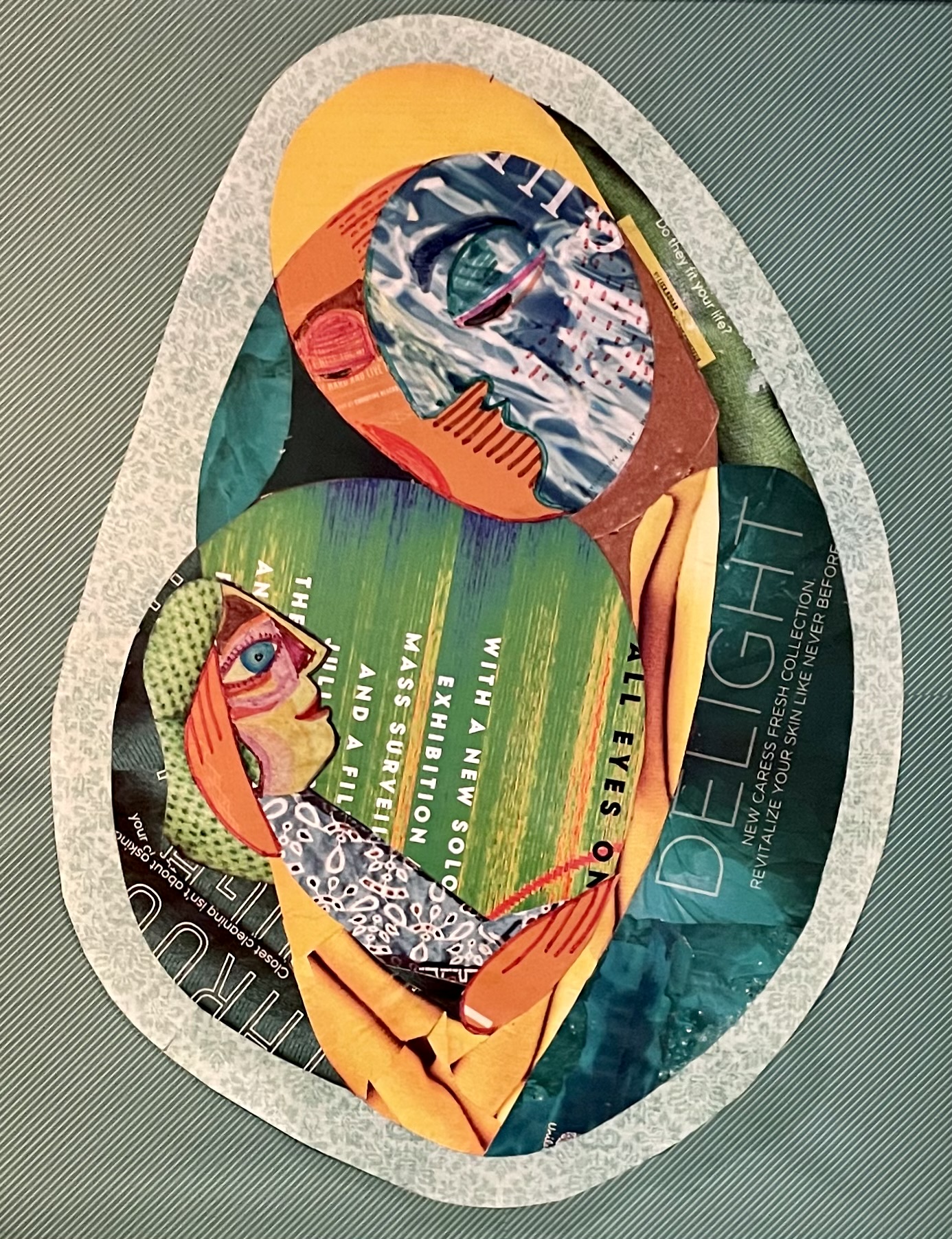The Seattle School has reserved a portion of its public space on both the second and third floors to display and honor art created by students, staff, faculty, and alumni, as well as artists from the greater Seattle area. This fall, collages created by Tara Hubbard MATC ’22 are featured in the second-floor Commons area through the end of the year.
In this interview, Tara shares her artistic process and describes how her time at The Seattle School shaped her understanding of herself and her work.
What draws you to your art?
I am a collage artist using paper already saturated with color, pattern, and movement, to create beauty. I love color and pattern. I’m overwhelmed by beauty, the way it hits me. I find myself drawn to this idea of the encounter with beauty, the pursuit of beauty, as described by John O’Donoghue, a fellow Irish mystic. I was born in Ireland, lived there for 20 years. and studied fashion design there as well.
The painter Gustav Klimt is one of your inspirations. Can you share more about your artistic process?
I find myself to be more undone and enraptured by Klimt’s pieces than by looking at flowers or a tree. I enjoy being inspired by other techniques and styles. There’s something about being immersed, looking at all the angles, getting to know something inside out. I know why Klimt put the yellow there. I’m exploring how deeply can I know this. I want to know this completely until it’s in my cells. I’m creating beauty because I’m trying to make myself: if I’m making beauty, I’m identifying myself with beauty.
 I’ve also created originals when inspiration comes to me, for example, my collection on Earned Attachment, collages that depict a father or mother holding a child. I didn’t have the language at the time to explain it. It took a few years later, when I was at this school and then I understood it: I was unconsciously trying to heal, trying to create attachment with the Godhead.
I’ve also created originals when inspiration comes to me, for example, my collection on Earned Attachment, collages that depict a father or mother holding a child. I didn’t have the language at the time to explain it. It took a few years later, when I was at this school and then I understood it: I was unconsciously trying to heal, trying to create attachment with the Godhead.
In my art, I connect to parts of myself, my unconscious, that need to be healed or processed. I have been surprised by what came out at the end in my art: God and I were co-creating. I’m coming to trust that there’s a purpose here, just go with it.
Often my art is an act of worship, to love, to beauty, to healing, to God. A way to extol. Some of the collage pieces are pieces of worship to someone I love, a moment in time that had a lot of meaning. Holding it up to the light and sharing it with others even though it’s not translatable. This was glory. That person was glory.
How did you evolve as an artist during graduate school?
Over the four years at The Seattle School, it took me most of the time to own the name “artist”. It didn’t sit in my body yet. That changed while I was in school.
I love how The Seattle School gave me words. I have a drive to express myself through poetry, art, and papers for school on topics I’m passionate about. Graduate school helped me find words for what I’m trying to express in my right brain and didn’t have words for. I feel like it did a lot of the work of integration. Getting the words and getting the awareness that came in school came together well with my art.
What drew you to the Master of Arts in Theology and Culture at The Seattle School?
When I came to the school, I knew I had things to say to the world. It kept getting bigger and bigger. I wanted direction and guidance, to know what that was.
How did graduate school shape who you are today?
I’m now working as a program therapist in shelters with traumatized women. At The Seattle School, I took all the psychology classes I could. I loved the mix. It was perfect for me. I didn’t want the limitations of licensure. I love people and I want to be in trauma spaces with people. I want to live with people and heal together. I want to speak to people where they are at. It’s worth it if I can speak to their shame, a sentence, a look, a touch. I think everyone needs someone to look them in the eye. Before The Seattle School, I would have amazing connections with people in 30 seconds. That impact matters to me. Now I know what’s happening, how significant it is, the neuropsychology, and I love all of it.


